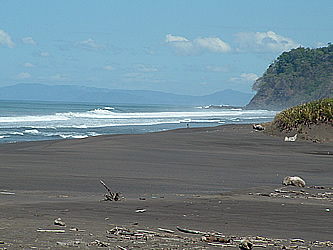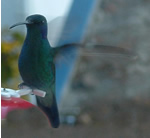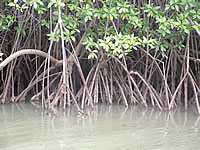Tourist Attractions in the Southern Costa Rica

These include: water-sports such as fishing, diving, surfing, kayaking etc.
Caves/Caverns
These are in Savegre, in Perez Zeledon. Arriving in San Isidro de Perez Zeledon, you travel northeast for about 2 hours, arriving in Savegre, which is a small community nestled in the valley below high, dense and beautiful mountains. It is about a 3 hour journey on foot or on horseback to get to the caverns. The people who run the caverns offer guide services, lunch and lodging if required. It is a very 'green' experience, offering complete contact with nature.
Rivers
Almost all the rivers in this region of Costa Rica are clean and anyone can safely swim in them. Normally the residents enjoy bathing in the river pools, and some of them also take the opportunity to do some river fishing. In some rivers such as the Rio General (in Perez Zeledon) and the Rio Coto Brus (in San Vito) opportunities for rafting and kayaking are available.
Waterfalls
In this region, you will find impressive waterfalls; the most famous, the Nauyaca waterfall, is in Perez Zeledon. Another very attractive spot for mountain walking and enjoying incredible scenery is 'La Casa de Piedra' (the House of Stone) which is in San Cristobal near Perez Zeledon, on the way to Dominical. This is a house that was built in the crevice of a rock and is close to an extremely beautiful waterfall. There are incredible waterfalls in abundance in this region.
Hot Springs
At the foot of el Cerro Chirripo are the hot springs. The family who runs the springs have made it one of the most visited places in the region. There are two medium-sized pools which have a constant supply of hot water. They are in San Gerardo de Rivas de Perez Zeledon.
Bird-watching

On the way to the southern region along the Pan-American Highway, there are many places where birds can be observed. One of the best periods is between April and May, and this is when Quetzals can be seen. The area is also popular for viewing other species of birds, such as the humming birds, escarchado, linnets, mozotillos, as well as butterflies and other animals. The well-known ornithologist Alexander Skutch who wrote one of the most well-known books on birds 'Birds of Costa Rica' lived in the area of General Viejo (Perez Zeledon), and it is here that the majority of his observations and those described in the book 'A Naturalist on a Tropical Farm' were made.
Beaches
There are more beaches than anything else here, normally only a few minutes from any of the cities in the southern region. Famous beaches like Dominical are a paradise to surfers. Pavones beach is also a popular surfing beach, and boasts the second longest left wave in the world.
Beaches with aesthetic beauty such as Ventanas beach and the National Marino Ballena, which is a conservation area for sea life such as fish, coral, lobster and others.
There are plenty of choices with regard to beaches and some of them are described below:
Description of the beaches on the Southern Pacific coast of Costa Rica.
Mangroves

Some years ago these were considered places of no value whatsoever; however, later investigations have unearthed its extremely high ecological value in terms of its bio-diversity. In this region the interesting vegetation that appears when the sea meets the fresh waters at the mouth of some rivers can be appreciated. The mangroves of Terraba Sierpe which are the biggest in Central America, are or particular interest to visitors.
Isla de Cano (Cano Island): An island dedicated to diving and fishing located near Bahia Drake (Drake Bay).
National Parks: The Parque Nacional Corcovado is of particular interest to the visitor; famous world-wide for having the greatest bio-diversity in the world. Excellent for researchers and tourists alike, there is also a wide variety of lodging available in the area.
Parque Internacional de la Amistad: This is the site of Cerro Chirripo and has been declared a 'Patrimony of Humanity'.